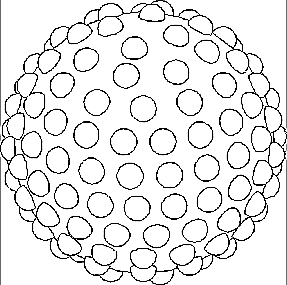
From the constant environment of space, the SOHO/MDI experiment provides researchers with the longest series of finely detailed electronic images of the sun we have ever obtained. Because the spacecraft is above the blurring effects of the atmosphere, and with the help of sophisticated computer analysis, it is possible to measure exceedingly small changes in the shape of the sun. These changes are caused by "oscillations" analogous to terrestrial earthquakes. Other ground measurements have observed such oscillations before, but never have we been able to actually detect the shape of the sun fluctuate because of these sound waves. The SOHO/MDI experiment is able to detect the edge of the sun move by about 10 feet. This sensitivity is equivalent to measuring the size of a quarter placed at the edge of the moon as seen from the surface of the earth.

By observing the sun as it rotates, the MDI experiment has also revealed
that the solar surface is "corrugated." its surface is covered with hills
and valleys about 5 times the diameter of the earth in lateral size,
but with a height of only about 1/2 kilometer. Although the sun is
gaseous, and has no solid surface, these hills and valleys of hot gas
rotate with the average 27 day solar surface rotation rate. They
are probably caused by a complex magnetic field "network" that
threads through the visible surface of the sun. The accompanying
figure (above and postscript version
shows how these solar "mountains" might look if they
were magnified in height 10 Million times.